|
THE ROYAL AIR FORCE CAREER OF
CHARLES WALTER STONE
RAFP AND AIR GUNNER
Service Number 508818
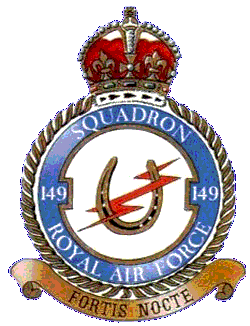
(Deduced and expanded from his log book entries, RAF Certificate of Service
And information from his Granddaughter, Mrs. Michelle Reynolds)
Charles was born on 1st Feb 1909 and first entered the Royal Air Force on the 2nd July 1928 as a member of the Police Branch; a “Snowdrop”.
After initial training he was posted to his first Unit, but did not remain there long. Soon he was off to Iraq, where he served as a Corporal in the RAF Police at RAFP Hinaidi, near Bagdad in the then Kingdom of Iraqi. Under Clause 1 of the Anglo-Iraqi Treaty of 1930 the British Forces maintained a force at Hinaidi for a permitted period of "five years after the entry into force of this Treaty."
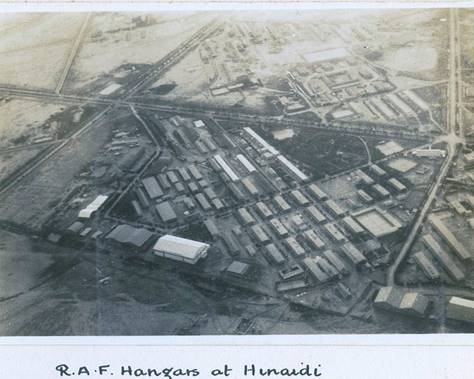
Charles served in Iraq from 1930 to 1933 before returning to the UK and completing his first “hitch” in the RAF. He was put on the Class “E” reservist list for ex-regular airmen, which meant that he was not available to be enlisted in the Army and had to complete 14 days training every year.
Between July 1934 and October 1939 he remained on the RAF’s “E” reserve list, before volunteering for RAF Aircrew. These men, who were always volunteers, never conscripted, usually had visions of becoming a Pilot but not all progressed to this position. It is as well to remember that a Bomber Crew was just that - a crew. Without any one of the crew, the rest were vulnerable and possibly unable to complete their mission
Basic Training
Charles had already served in the RAF so was not subjected to the normal one or two days being kitted out, getting injections and checking over by a doctor or dentist. Or going through the eight weeks of Basic Training, which was more directed to making the airman into a soldier rather than an airman! Charles rejoined the RAF on the 13th November 1939, and after a period in the Reserve was posted for training to 14 ITW (Initial Training Wing) in Bridlington. Bridlington town was home to 14 Initial Training Wing, where aircrew cadets learned to march, did lots of PT on the sea front and went to classes in the Spa Royal Hall. They were accommodated in requisitioned boarding houses and hotels. Permanent staff were billeted in boarding houses and the HQ was located in the Brentwood Hotel.
Then it was off to the EAGS (Elementary Air Gunner School) in Bridgenorth for 6 weeks. The EAGS instructors had all done a tour of Ops. (30 Ops, a full tour, was rewarded with a minimum of 6 months screened from Ops). In addition to lectures, real life incidents made the Instructors appear a grand example to the Trainees. Their schooling and comments on life in the RAF helped the trainees cope with the conditions and hardships of training. A few trainees couldn't take it and were removed. ('I didn't join the RAF for this', was an oft heard statement). All aircrew were volunteers and could cease training before flying, without detriment to their record. Leaving after commencing flying led to a charge of LMF (lack of moral fibre). This usually meant transfer to a distant ‘drome as lavatory cleaner with no hope of promotion.
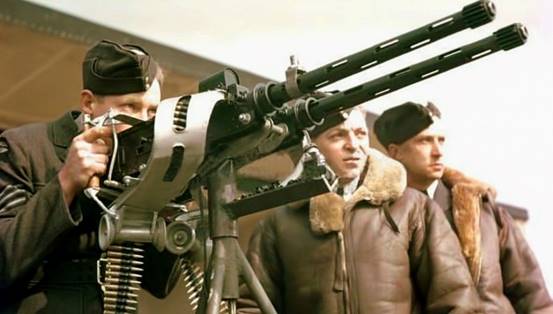
In Bridgenorth the main thing they were taught was turret work ... they learned how the turret lifted the guns up and down again, how to harmonise the guns - you've got four guns and so what you want to do is put the most bullets in the centre, so when you're looking down the sight you can see the dot in the middle, and you want to put your bullets there. This was called Harmonising the guns. They also learned about the 'bullet drop', calculating the curve of fire and learning how to aim at targets in the air, how to build and strip down the .303 guns (eventually assembling them blindfolded) and finding faults on those guns.
One gunnery instructor at Bridgenorth, W/O 'Jock Hunter', had done his Ops on Hampden aircraft and was famous with the trainees for his use of the word 'deflection'. In gunnery terms he regarded this as essential to being a good air gunner. 'Deflection is the distance travelled by the target during the time of the flight of the bullet', he said. He would pause in a lecture and snap at a trainee. ‘What IS deflection?’ The chap had to know it off pat. This could happen three or four times in the course of an hour's lecture. They soon knew what deflection was!
Completion of courses on gunnery, aircraft recognition, hydraulics, morse, turrets and how the RAF is run, saw trainees assemble ‘en masse’ on Bridgnorth railway station, bound for No.2. air gunnery school - Dalcross, near Inverness. This trip took some 30 hours, normally including a 6 hour wait at Crewe!
No.2 AIR GUNNERY SCHOOL, DALCROSS
No 2 Air Gunnery School (AGS) formed at Dalcross, now Inverness Airport, on 10 July 1941 flying Defiants and Lysander aircraft. Lysanders were used to tow target drogues and 3 gunnery turrets were placed on the ground to train air gunners to follow circling aircraft. Defiants were used to give the cadets experience of Turret work. School inevitably started with lectures for 3 days, before the real job of flying began. Charles was airborne on the 31st Oct '42 for the first time in his new role. Flying took place over the Moray Firth. Strong winds were normal and a hazard to the Defiant aircraft taxiing to the runway for take off.
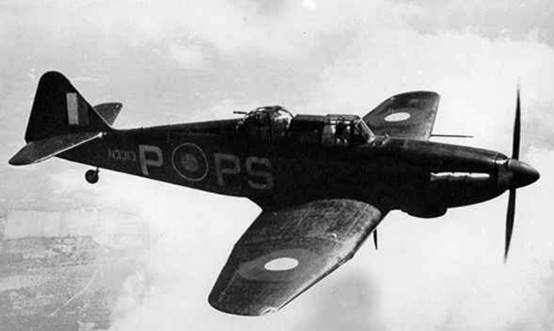
The Boulton-Paul Defiant was originally used as a day fighter, but after some initial success was withdrawn and used as a night fighter then as a training aircraft. Its single turret was ideal for training Air Gunners.
Charles’ first logged flight was in Defiant T3957 with Sgt Read as the pilot, and lasted 30 minutes. It was a Cine Camera Gun flight, when a mock attack took place to allow him to fire off 25ft of camera film, which was assessed afterwards. The same day, he flew with Sgt Mann as pilot and fired off 200 rounds – his first Air Firings. Trainees usually fired 200 rounds at a drogue towed by another aircraft approximately 400 yards away. On return he would have collected the drogue from the drop zone, and taken it to the parachute section. The holes were counted and cancelled with a black stamp and a card, with his score was then taken to the gunnery section for assessment.
Other No 2 AGS entries: November 1942. The code letters B,R,S,Q,X,U, are most likely abbreviations for specific exercises, to simplify log book entries and could refer to the relationship between the target and the Defiant: 'high', 'parallel', 'low'. 'beam shot', angle shot' and so on. He would have been shooting at a drogue towed by a Defiant or Martinet aircraft and his hits are recorded for each flight as a % score. Although it was essential to learn how to hit a moving target whilst actually moving, there were sessions in turrets mounted on the ground and powered by car engines from which the trainees fired live bullets at moving targets. Charles’ O.C at Dalcross wrote on his “Course and remarks” form, “PASS. Keen and interested. Has set a high standard. Confident and reliable cadet”.

When a trainee air gunner completes his training he is given his air gunner's brevet and promoted to sergeant. The need for sergeant rank was to provide better treatment if taken prisoner of war. At that time the badge for an air gunner was a bullet with wings worn on the sleeve. On completion of his training, Charles got his “wing” and passed out as a Sergeant, with a Sergeant's pay (8 shillings a day). Air time for this course was 8 hrs 30 minutes flying time. One ex- Dalcross student happily records, “When we completed the course we left behind a cookhouse turning out the best porridge I have ever tasted! Now we were Sergeants, going on 10 day's leave!”
1483 (Bomber) Gunnery Flight.
Charles was then sent to the No 1483 (Bomber) Gunnery Training Flight at RAF Marham, equipped with Wellingtons Ic & III and Defiant I & II aircraft.

The purpose of this flight was to train bomb aimers and air gunners who came directly from training schools without going to Operational Training Units. Usually, newly qualified aircrew would group together themselves - a Pilot, Navigator, Bomb Aimer, Wireless Operator and an Air Gunner whilst at an OTU (later called HCUs). 1483 “B” took the load from the OTUs and generated a lot of fully trained personnel for the Squadrons, usually as “spares”. His first logged flight at Marham was in BJ 655, a Wellington aircraft, with Pilot Officer Stoddart as the pilot. The duty consisted of Air to Sea firing and lasted 1 hour. A further six flights in Wellingtons took his total flight time on type to 9 hrs 30 minutes and the successful conclusion of his training. Now he was ready for a crew!
Author’s Note. In Charles’ Log book there is a difference in flight hours between Charles leaving 1483 Flt and arriving on 149 Sqn, “C” flt of some 14hrs 55 Day and 10hrs 05 Night. This leads me to believe that during this time he attended and “crewed-up” at 1651 Heavy Conversion Unit at RAF Waterbeach, operating Stirling aircraft. This would almost exactly cover the missing flight hours, and Sgt Parke (plus crew, including Charles) was posted in from 1651 HCU to “C” flight of 149 Sqn in March ’43.
149 (East India) Squadron, Royal Air Force.
Charles’ arrival on 149 Sqn was as a posting to the Squadron training flight, “C” flight. His first flight with them was on the 23rd March 1943, a time when 149 was taking heavy losses due to the low altitude attainable in the ageing Stirling Bombers they were equipped with.

Although the Stirling could happily out-turn a Hurricane at low level, the usual bombing altitude of 12,000 to 15,000ft made them vulnerable to searchlights, flak and night fighters. The first trip was a “fighter affiliation” exercise, where the aircraft would be the target for a fighter intercept and a few “attack” runs, which the Stirling pilots quite enjoyed due to the maneuverability of their aircraft. This flight was in Stirling EF 337, coded OJ-Y. The next 5 trips covered High and Low level Bombing, Day and Night cross country flights and circuits and landing. Another weakness of the Stirling was its habit of swinging badly on take-off. Many were lost through Take-off and Landing accidents during its service period, so these exercises were not as mundane as they might sound. Sgt Parke was the main pilot during these work-up flights. He had arrived on 149 Sqn on 13 Mar 1943 from 1651 Conversion Unit ending the month as Flt Sgt Parke. Charles’ total flight time on “C” flight was 8.55 Day and 4.14 night, finishing on the 30th March 1943. Some eleven days later Charles was transferred to “B” Flt, 149 Sqn and Operational Duty. His arrival on “B” flight was with Flt Sgt Parke as his pilot and a total of 45.15hrs Day flying and 18.15hrs Night flying.
Operational Flying.
The first big difference on joining “B” flight was the better aircraft available. The “C” flight aircraft were definitely on the “war-weary” side, but the Operational ones were in far better shape.
The first flight they did as a crew was in OJ-P, Stirling BF 510. This aircraft was built by Short Brothers and Harland at their Belfast facility and arrived on 149 Sqn on the 31st March 1943. That aircraft was later lost on a Mining trip to Biscay on the 22nd May ’43.
The crew for this first trip (an Air Test) was:
Flt Sgt Parke S G Pilot
P/O Upchurch S W Navigator
Sgt Skelton T W Wireless Operator
Sgt Jackson R G Bomb Aimer
Sgt Stone C W Mid Upper Gunner
Sgt Browne P Flight Engineer
Sgt Aspey W Rear Gunner
Later the crew pilot was Flt Lt Reece.
OPERATIONS.
1st Operation. 11/4/43 OJ-P BF510 7hrs10
It was a time when all crews were required, so later that day (the 11th), in the hands of the new C.O. Wing Commander G E Harrison (the CO took over as Captain and Flt Sgt Parke took the duties of 2nd pilot), they were off to the North end of Lake Hourtin, on the west coast of France to lay mines. The duty was carried out successfully and logged in as 1hr 13 minutes. The first “Op”. Another two trips with Flt Sgt Parke followed, being navigation exercises, and air test combined with another fighter affiliation.
2nd Operation. 15/4/43 OJ-K BK703 6hrs 40
The crew’s first “solo” Op was again mine laying, this time in the Bay of Biscay.
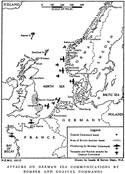
Mine laying was (incorrectly) regarded as a “safe” way to bring new crews into Operations. The statistics of aircraft lost shows that these trips were just as dangerous as any others and many were lost carrying out this task. This mission was successfully completed.
3rd Operation. 20/4/43 OJ-K BK703 7hrs 30
A trip to Rostock to bomb the Heinkel Aircraft Factory. Flt Sgt Parke reported on return as : No cloud. Bombed the centre of recently started fires. Fire increasing as we departed. The Sqn ORB’s tell us that two aircraft were lost on this raid, one flying into the North Sea, with no survivors.
Author’s Note: Flt Sgt Parke was posted away from the crew and the squadron, to RAF Lakenheath, on the 18th of May ’43, with the result that the rest of the crew did no Ops for seven weeks. Their next Operation was to have a new Captain, Flt Lt Reece.
4th Operation 11/6/43 OJ-D BF477 3hrs 50
Charles’ new captain was Flt Lt A Reece, DFC. The rest of the crew remained the same. The operation was to Dusseldorf and was reported by Reece as : “Thin cloud. Target area visibility good. Red and Green TI’s (target indicators) seen in bombsight. Estimate main bombing undershot target. Own bombing on target. 1 canister of 6lb incendiary jettisoned. Bomb sight compute box failed to indicate”.
5th Operation 19/6/43 OJ-A EH883 6hrs 35
Newly promoted Sqn Ldr A Reece took the crew to Le-Creusot and reported: “Patches of slight mist. Brightness of flares and thick smoke tended to obscure target area. Buildings clearly seen between lakes. Own bombing successful. One went up with shower of red sparks. Building seen to go up. Bombing seemed concentrated.
Sqn Ldr Reece was confirmed as O.C. “A” flight at this time.
Author’s Note : My Uncle, Flt Sgt A A Brown was on this and many other trips at the same time as Charles’ trips. His story is at http://www.stirlingpilot.org.uk
6th Operation 22/6/43 OJ-A EH883 3hrs 50
The crew led this raid on Mulheim. Reece reported: “Vis good. Details identified, also red and green TIs visible in bombsight. Bombed centre of Tis. Very large explosion seen 2 ½ miles NW of aiming point. Bombed centre.”
7th Operation 23/6/43 OJ-A EH883 6hrs 40
This was another mine laying trip to the Bay of Biscay – successfully accomplished.
8th Operation 25/6/43 OJ-A EH883 3hrs 45
The crew again led this trip to Gelsenkerchen where they successfully bombed thro’ 9/10ths cloud.
9th Operation 28/6/43 OJ-A EH883 3hrs 50
This was a major raid on Cologne with over 600 aircraft taking part. 149 Sqn lost three aircraft, two of them to night fighters. One of those aircraft was OJ-K BK703 - the aircraft they had been in for their third Op. The crew flew with Sgt Bowen, a new squadron arrival, as second pilot. This was part of the process of introducing new pilots to the rigors of Operations, and was known as Fam or Second Dickie trips. The new pilots would do two or three trips like this before being sent out with their own crews. The target was successfully attacked.
10th Operation 3/7/43 OJ-A EH883 4hrs 40
This trip does not appear in Charles’ logbook, but squadron records show they did indeed do this return trip to Cologne. Again it was a major raid, with 650+ aircraft, 149 Sqn losing two. It was the first night the Luftwaffe Nachjaeger had used the “Wilde Sau” (Wild Boar) technique, where Flak was limited to a set hight. This allowed the night fighters, including for the first time the Focke-Wulfe 190s of Jagdgeschwader 300 to operate above that height with impunity. 12 aircraft fell to the fighters that night, including one from 149 Sqn.
11th Operation 24/7/43 OJ-A EH883 5hrs 35
Again, absent from the logbook. This trip was to Hamburg as part of “Operation Gomorrah” but more commonly called the “Battle of Hamburg”.
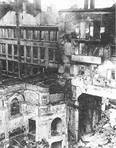
Raids of up to 800 aircraft hit Hamburg on the 24th, 26th and 28th of July and the 2rd August. Charles’ crew flew in this Battle on the 24th and 28th July and the 2nd August.
12th Operation 28/7/43 OJ-A EH883 5hrs 35
See Above. Battle of Hamburg. It was in this raid that the fire storm was first noticed. A single large fire consolidated into a firestorm with 100 to 150 mph winds and a temperature estimated at 800 degrees centigrade. It killed over 40, 000 civilian personnel in Hamburg, spawning books and a strong condemnation of the “Area Bombing” policy. This raid is often quoted as the reason that there was no “Bomber” medal, or even memorial, until the present day.
13th Operation 2/8/43 OJ-A EH883 5hrs 35
See above. Battle of Hamburg. At the de-brief the crew commented on the violent storms they had encountered en route.
14th Operation 10/8/43 OJ-A EH883 7hrs 25.
Crew captain was the Sqn CO, Wing Commander G E Harrison and the trip was to Nuremburg. S/Ldr Reece did not fly this trip but did mange to pick up his Air Force Cross (AFC) to add to his DFC. The CO did make a good substitute and the mission was successfully carried out.
15th Operation 12/8/43 OJ-A EH883 8hrs 10
Operations to Turin. Again, S/Ldr Reece did not fly, but his place was taken by W/Cmdr Harrison with the Station Commander, Group Captain Stowell, as the second pilot. These stalwarts led a 12 aircraft raid and the mission was deemed a successful operation.
16th Operation 16/8/43 OJ-A EH883 8hrs 25
The crew returned to Turin for this Op, with S/Ldr Reece as pilot. The crew reported on their return that they had seen several explosions in the centre of the Railway yards with fires spreading. What was also mentioned was that the aircraft had done 6 target runs. This was most unusual as it directly increased the aircraft’s chances of being hit.
17th Operation 5/9/43 OJ-A EH883 6hrs 40
Wing Commander Harrison took the crew to Mannheim, reporting an effective mission with many “terrific” fires seen. Three of the Squadron’s aircraft failed to return. This was another 600+ aircraft raid, aimed at Mannheim and Ludwigshafen. Both targets received very severe damage, but a total of 34 aircraft were lost.
Author’s note: One of the lost aircraft was OJ-N, my Uncle’s aircraft.
18th Operation 15/9/43 OJ-A EH883 6hrs 10
S/Ldr Reece took the crew to Montlucon for what turned out to be a “milk run” with no opposition and no bad weather leading to a successful mission. A welcome change for the crew.
19th Operation 16/9/43 OJ-A EH883 7hrs 40
Gp Cpt Harrison took the crew to Modane, reporting slight haze, river and TI’s seen, small fires.
20th Operation 22/9/43 OJ-H BF570 5hrs 20
This time it was Flt Sgt Nichol who took Charles to Hanover as a replacement Mid-upper Gunner for OJ-H. The rest of S/Ldr Reece’s crew did not participate. This often happened if people were sick or unavailable for Ops. The crew reported seeing the Target fires all the way to the coast, on their return.
21st Operation 22/11/43 OJ-H EJ109 6hrs 35
S/Ldr Reece led 149 Sqn’s effort to Berlin, with his full crew. The so-called, “Battle for Berlin” started on the 18th November. From that date to the end of February there would be fifteen raids on the Capital city of Germany. Being so heavily defended the losses were high, and the Stirling aircraft, being the lowest and slowest of the attackers, took the brunt of those losses. The campaign was not limited solely to Berlin, however. Other German cities were attacked to prevent concentration of defenses in Berlin, and Bomber Command had other responsibilities and operations to conduct. The campaign was launched by Arthur "Bomber" Harris, AOC of RAF Bomber Command. Harris believed this could be the blow to break German resistance: "It will cost us between 400 and 500 aircraft. It will cost Germany the war".
It is generally accepted that the Battle of Berlin was a failure for the (RAF) as it was not the knockout blow that Harris had predicted and during the battle, the RAF lost 1,047 bombers, with a further 1,682 damaged, and well over 7,000 aircrew, culminating in the raid on Nuremberg on 30 March 1944, when 94 bombers were shot down and 71 damaged, out of 795 aircraft.
22nd Operation 13/2/44 OJ-P LJ526 7Hrs 57
The new Squadron Commander, W/Cdr Wigfall flew as pilot, with Flt Sgt McGrevey as Flt Eng and PO Oxtoby as the W/Op, on a “Special Operation”. These were operations carried out in support of the Special Operations Executive (SOE) and normally were lone trips into occupied Europe to drop supplies and equipment to the French Maquis fighters. Security meant that the drop zone and load carried were secret and not entered in Log Books.
23rd Operation 5/3/44 OJ-A EF140 8hrs 10
The majority of the old S/Ldr Reece crew got together for this “Special Operation”, with the changes being a promoted Pilot Officer Stone (Charles received his commission on the 1st Nov ’43 and held it until discharge on 11th Nov 1945.) and Flt Sgt McGrevey as their Flight Eng. Again it was carried out successfully.
24th Operation 15/3/44 OJ-D EH993 4hrs
This trip was piloted by W/Cdr Wigfall with the new Station Commander G/Cpt Yarde as his second pilot, and took them to Amiens. They reported a large orange explosion at 21.03 and 11,500 ft in the target area. This was probably an attacking aircraft blowing up in flight. The railway yards had become a prime target and 149 Sqn had attacked five different ones in March alone.
25th Operation 28/4/44 OJ-H EJ109
On this trip Charles was serving as a fill-in for the mid-upper gunner on P/O MacArthur’s crew. It was another “Special Operation” and was carried out successfully, despite being badly shot up by Flak over Southern France and a crash landing at Lakenheath.
26th Operation 29/4/44 OJ-F LH500
Again with on P/O MacArthur’s crew, this was to be Charles’ last Op; a “Special Operation” successfully carried out.
His log book is annotated:
First Tour Completed 26 Sorties.
Total flying time with 149 Sqn – Day, 107.00Hrs
Night, 213.12Hrs
This was not just the end of his Tour of Duty, but very shortly afterwards the end of the Stirling Aircraft with 149 Sqn.
During his war time service he was awarded :
The 1939-45 Star (Aircrew Europe)
The Defence Medal
The Victory Medal
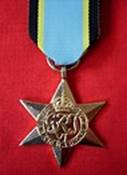  
Author’s Note: There is one other entry in Charles’ Logbook;
64 Flight No 2 RAF/P District Singapore.
22/12/50 KN467 Dakota aircraft Pilot Flt Lt Ives.
Duty as Provost Escort , escorting No 4037947 A.C. O’ Mahony from RAAF custody at Darwin, Australia.
His career, however was not yet over. From the paperwork sent to me it is obvious that he spent some time with 635 Sqn. This squadron was formed at RAF Downham Market in Norfolk on 20 March 1944 from two flights drawn from No. 35 Squadron and No. 97 Squadron, equipped with Lancaster Mk.I bombers, as part of No. 8 Group RAF in Bomber Command. It re-equipped with Lancaster Mk.III bombers the same month, then Lancaster Mk.VI bombers in July. After the end of its bombing operations in April 1945 it was used for transport and food relief until disbanded at Downham Market on 1 September 1945. Charles’ time with them was short and he was posted to 100 PDC on the 9th August 1945. This was the Personnel Dispatch Centre at RAF Uxbridge, and from there, back to “civvy street”
Obviously Charles did not get along too well with life as a civilian ( registered as a “Butcher’s Assistant) as he subsequently re-joined the RAF/P (Provost) Branch as Sergeant Stone in late 1948. His re-engagement officially started on the 25th of Feb ’49 and lasted until 10th June 1953, when he was discharged to the “G” reserve with a glowing report from his Commanding Officer, Flt Lt S.E. Thompson. During this time he was also awarded the General Service Medal (GSM) with the Malaya clasp, showing he served the qualifying period of active service during the Malaya Police Action.
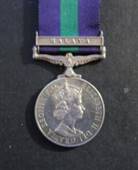
Return to Index
|
 Stirling Pilott
Stirling Pilott 
 Stirling Pilott
Stirling Pilott 